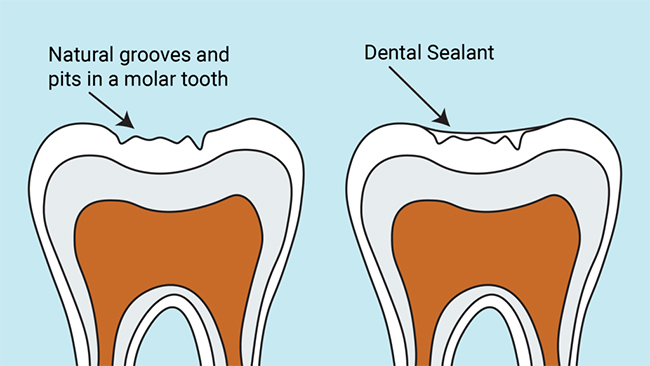Deep pits and grooves on the surfaces of the back teeth (usually on the molars) are known as fissures. As they are very narrow it can be difficult to clean them with a toothbrush and toothpaste alone as the bristles are too thick and do not reach down into the fissure. Every time you eat or drink, bacteria can enter these fissures, gradually making them wider and deeper over time and eventually resulting in tooth decay.
Dental sealants are thin coatings that when painted on the chewing surfaces of the back teeth (molars) can prevent cavities and tooth decay. A sealant is defined as a ‘preventative dental treatment’. Sealants protect the teeth surface from cavities by covering them with a clear protective shield that blocks out germs and food from entering the grooves on your teeth. Sealants are vital for the long-term protective effects against tooth decay. Sealants are most commonly applied to the molars and premolars.
Sealants are highly effective in helping to prevent decay in fissures. Like a normal filling, a sealant can last for many years with the correct maintenance and care.

Tooth fissures are common in children and teenagers and will often cause cavities, normally in the back teeth. Fissure sealants are an effective way of protecting young teeth, permanent molars and premolars (once they have erupted and are mature enough for the application). We will often recommend a fissure sealant for adults who are at a high risk of developing cavities as a result of tooth fissures.
Applying a fissure sealant is quick, easy and comfortable, and there is no need for an anesthetic, drills or needles. Your teeth will be cleaned before the sealant is applied, and it will be hardened under a special UV light, forming a protective coating over the tooth. Sealants can be applied by a dentist or dental hygienist.
If the sealant is damaged or it falls out, it can be easily replaced. Regular dental checks are important to maintain the condition of your sealant.


